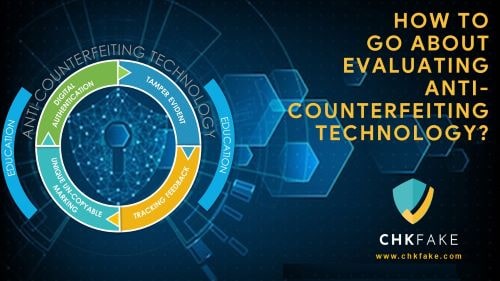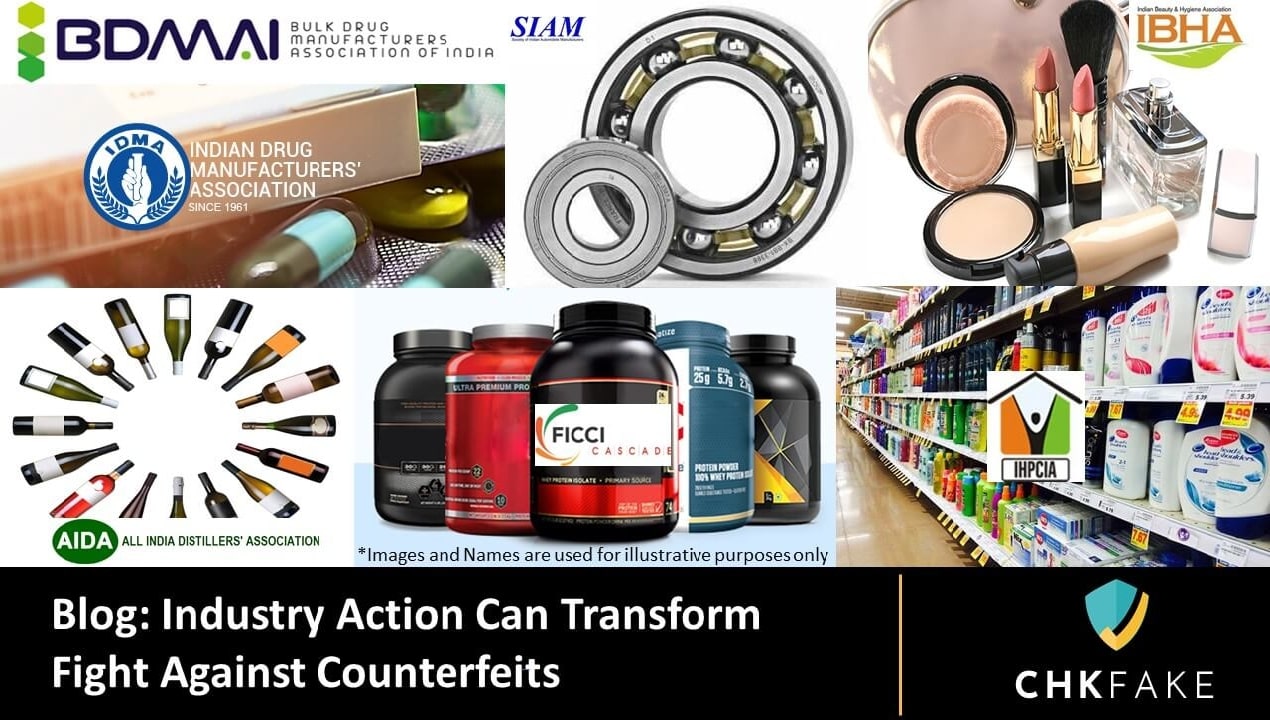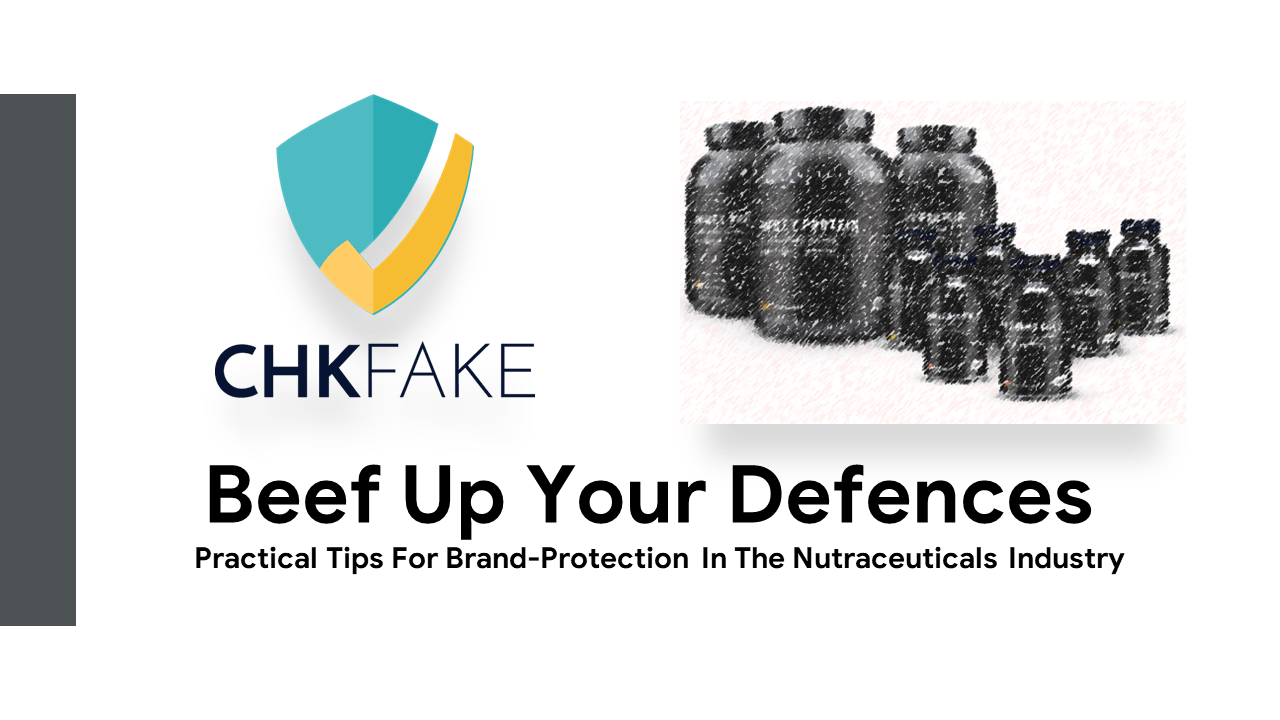
In the previous blog “Why Should you Use Anti-Counterfeiting Technology?” we explored the factors that make it easier for counterfeiters to attack your brand and why some brand leaders are reluctant to take action or acknowledge that a problem even exists.
In this blog, we will explore the criteria to be considered for choosing the right anti-counterfeit technology for your brand and supply chain. Let us first explore the choices available in front of us today.
There is a plethora of anti-counterfeit technologies available to brand owners, ranging from the very simple but effective, to the highly sophisticated and secure. Most technologies can be applied on the individual or the bulk packaging components, but some features can be used directly at the product level itself by direct marking or markers within the formulation.The purpose of an anti-counterfeit feature is primarily to enable the internal teams, third-party investigators or the customers to authenticate the item. The second purpose is to act as a deterrent to any counterfeiter.
Anti-counterfeit technologies can be broadly classified as follows:
1. Overt, or Visible

Overt technologies are intended to enable users to verify the authenticity of a pack visually. These features are prominently visible, and are difficult or expensive to reproduce. Some prominent examples include holograms, optically visible devices, color-shifting security inks and films, security graphics, and on-product markings. Some special inks undergo a change in phase (such as colour change or appear/ disappear) on a physical action such as rubbing or adding water or change in temperature.
2.Covert, or Hidden

Covert technologies are invisible to the naked eye and need a device or decoder to be authenticated. Covert features are mainly aimed at brand owners or brand-authorized investigators to identify counterfeited products. The customers will not be aware of their presence, nor will have the means to verify them. Examples include invisible printing, digital watermarks, embedded images, hidden marks, laser coding, substrates, and odor. Typically, specialised decoders such as UV lamps, or custom devices are needed to authenticate these technologies.
3.Forensic Features

Forensic features are a set of security technologies that require a lab environment or specialized field kits to prove the authenticity of the brand. Examples include chemical taggants, biological taggants, DNA taggants, and isotope ratios. This requires the product to be brought back to the lab to be authenticated, although now there are some options which have a field testing kit as well.
4.Serialization/Track and Trace

Serialisation technologies involve assigning a unique identification code to each unit of the product manufactured, which stays with it through the supply chain until it is finally consumed. The identification details may include the product SKU, pack size, manufacturing date, batch details, and expiry date. Examples include serial numbers, bar codes, Block-chain based tags, and RFID tags. The code can be scanned and queried at any point in the value chain and can retrieve the product details including its journey through the supply chain.
This technology is growing in popularity as it is easy for brand owners to understand and seems to serve the dual purpose of product authentication as well as managing territory infringements. However, track and trace is a relatively weak anti-counterfeiting technology if used in isolation, since the unique codes themselves are relatively easy to copy.
There is a wide range of possible solutions ranging from low cost to highly expensive, from the very simple to the highly complex, and from fragile to highly secure against counterfeiting. It is also true that any one solution will not be appropriate for all applications – the costs may not be affordable in developing markets, or for low unit price/ unit margin products.
Choosing the right anti-counterfeiting technology for you
The next big question is how do you choose which anti-counterfeiting technology is best for your brand? Let’s look at some of the criteria brand owners can use to choose the right anti-counterfeit technology.
“An ideal anti-counterfeit technology should possess a high level of security (non-cloneable), higher product application and authentication speed, proven standards, be difficult to remove and reapply, easy to check, have automatic authentication, be useable by consumers, and must be legally compliant by the industries.”
Europe’s BRIDGE consortium
Our experience of dealing with hundreds of brand protection leaders has told us that a multi-layered anti-counterfeiting solution provides greater protection against counterfeit attacks. Brands should review the combined mix of anti-counterfeiting technology package on the following criteria
1.Difficult to Copy
The first core criterion for anti-counterfeit technology is that it should provide a marking that is unique and non-cloneable. The most important aim of the anti-counterfeiting technology is to make it difficult and longer for the counterfeiter to copy or mimic.
2.Anti-Refill

Your anti-counterfeiting solution should easily reveal if the package has been tampered with, so that any attempts to refill a genuine used packaging can be detected by the user. Options can be investing in a highly tamper-evident closure which can then be further protected by a strong non-clonable marking. Alternatively, a security label or seal can be so placed on the packaging such that it is destroyed once the package is opened. This will ensure that the used package is not reusable, and if the packaging is reused or re-filled, it can be easily detected.
3.Easy to Authenticate

The ease with which the user can authenticate the brand and availability of authentication devices are key criteria for selecting the right anti-counterfeiting technology. If it is cumbersome to authenticate the product for the consumer or the authentication devices are not easily available, it loses half the battle.
Fortunately, Brands have an option to now link their anti-counterfeiting solution on a universal authentication platform such as Chkfake, making it easy for their product to be verified by customers or internal teams.
4.Easy to Report
The technology should enable users, internal teams, and investigators to report the incidents of infringements/ counterfeits with ease. The tool should allow reporting to be done in real-time or at home base and should allow collecting and attaching evidence (such as product images, receipts, shopfronts, etc.) with the report. For quick-action it should also provide for real-time notification to the brand protection team.
5. Minimal Impact on Supply Chain

Another important criterion to consider is that it should not have a major impact on the supply chain in terms of changes to packaging or production lines. It should not involve significant Capex investments which typically push brand leaders to lean away from implementing any technology at all. Also, it should not be too complex to implement or slow down the production line capacity, else the production team will become the biggest opponents of the program
6.Market Intelligence

Anti-counterfeiting technology is a solution for infringement identification and enforcement but also acts as a big deterrence factor. Brands can work on their strategies if they can get actionable intelligence from the market. If strong analytics is available, brands can prioritize enforcement actions by product, geography or channels.
Market intelligence on product SKUs can help in improving anti-counterfeiting features on more vulnerable products. Trend data can help review impact of enforcement actions taken. And finally, good market intelligence can help professionalize the brand protection function itself by allowing strong and impactful management reporting on core parameters such as estimation of loss to counterfeits, affected geographies and products, and ROI of anti-counterfeiting initiatives.
7.Branding and Design

In order to achieve the purpose of security, enterprises need to pay more attention to the user experience of anti-counterfeiting technology, including convenience, aesthetics, and interactivity. Beautiful design is often considered a competitive advantage and anti-counterfeiting technology that enhances brand image always has more takers than something which may be effective but lowers brand aesthetics.
8.The credibility of the Supplier

One must check the credibility of the supplier in terms of their ability to deliver consistent quality products at the right time every time. Counterfeiters are very smart and catch-up very fast to imitate the brand’s security features. Care should be taken to choose a technology that is agile to allow brand leaders to stay ahead in the curve. Look at the innovation roadmap of the supplier to gain confidence in their ability to provide you the right solutions keeping pace with time.
9.Cost

Cost can be a big deterrent while choosing the right anti-counterfeiting technology for your brand. Brands should evaluate any anti-counterfeiting technology in terms of one time setup cost, the recurring cost per unit or periodic subscription as well as the cost of implementation in the supply chain.
However, too often Brands make the mistake of clubbing anti-counterfeiting cost into the cost of goods sold, which is always under Supply Chain pressure for optimisation. Many a times, this results in a sub-optimal technology being used. The right approach is to look at anti-counterfeit cost as an investment for higher revenue returns, in line with how marketing investment is considered.
Anti-counterfeiting technology has the potential of arresting direct revenue loss to counterfeits and infringements, but also protecting against the loss of brand value and risk to customer health and security. A full benefit-cost analysis needs to be done in order to get the most optimum anti-counterfeiting solution.
Anti-counterfeit technologies alone do not reduce counterfeits but make them easier to detect and deter the brand being targeted. However, a holistic approach is crucial to maximise the investment in these technologies including educating customers and internal teams on how to verify and taking effective enforcement actions.
Watch out for my next blog on “ The need for industry-wide action against counterfeiting and lookalikes.” If you liked what you read, please do share in your network. You can follow my articles on LinkedIn and Twitter, or subscribe to My blog.
_______________________________________
Tanmay Jaswal is the Founder of Chkfake, a start-up that is disrupting the anti-counterfeiting industry by creating an eco-system of all stakeholders to join the fight against fakes together. The Chkfake mobile app allows users to verify genuineness of any product irrespective of category or brand.
Tanmay has 26 years of global experience in business leadership, marketing and strategy in companies like Coca-Cola and Shell and is an acknowledged authority on brand protection. He has headed the brand protection function for Shell globally and has extensive experience in this space over the last 8 years.






0 Comments